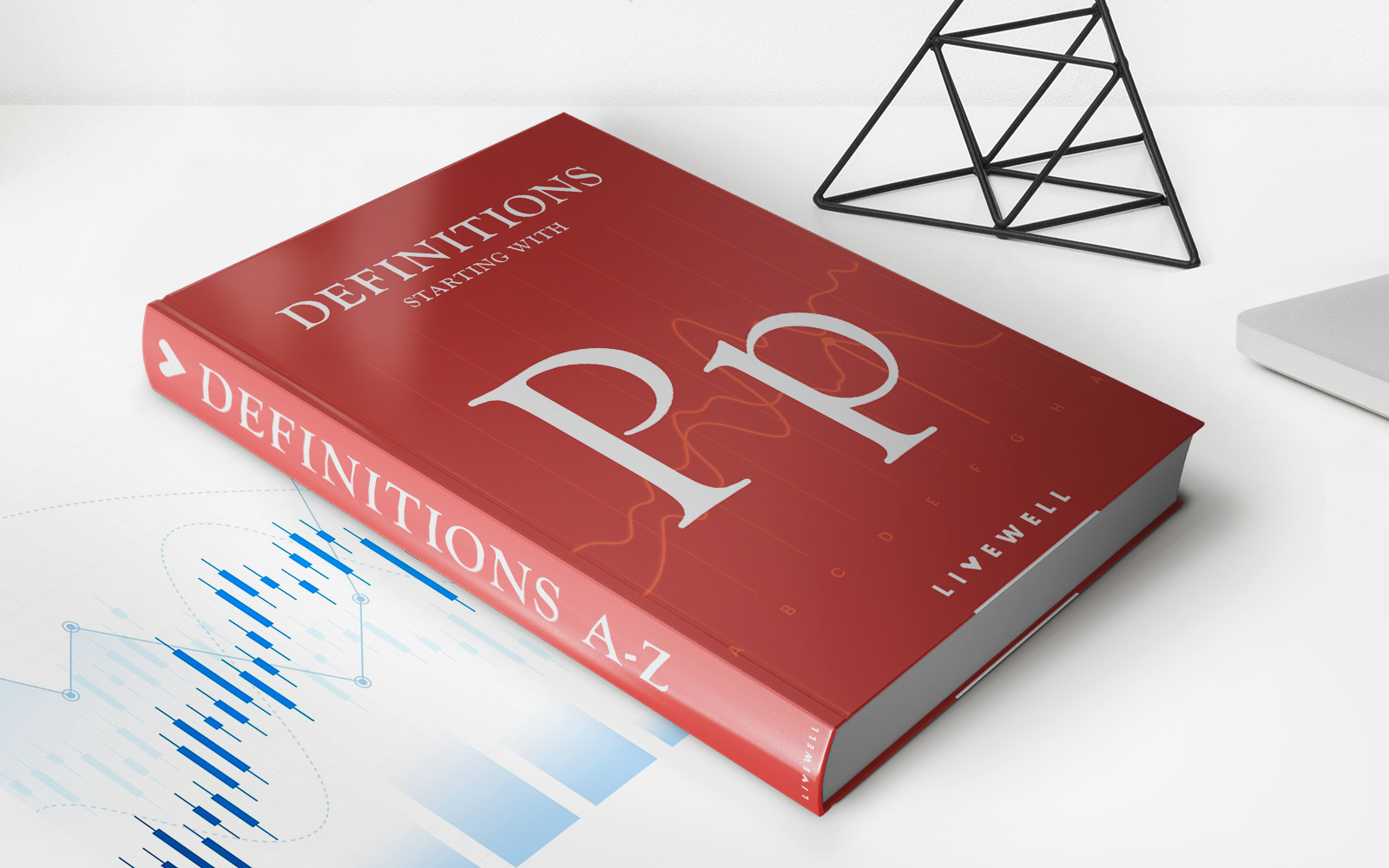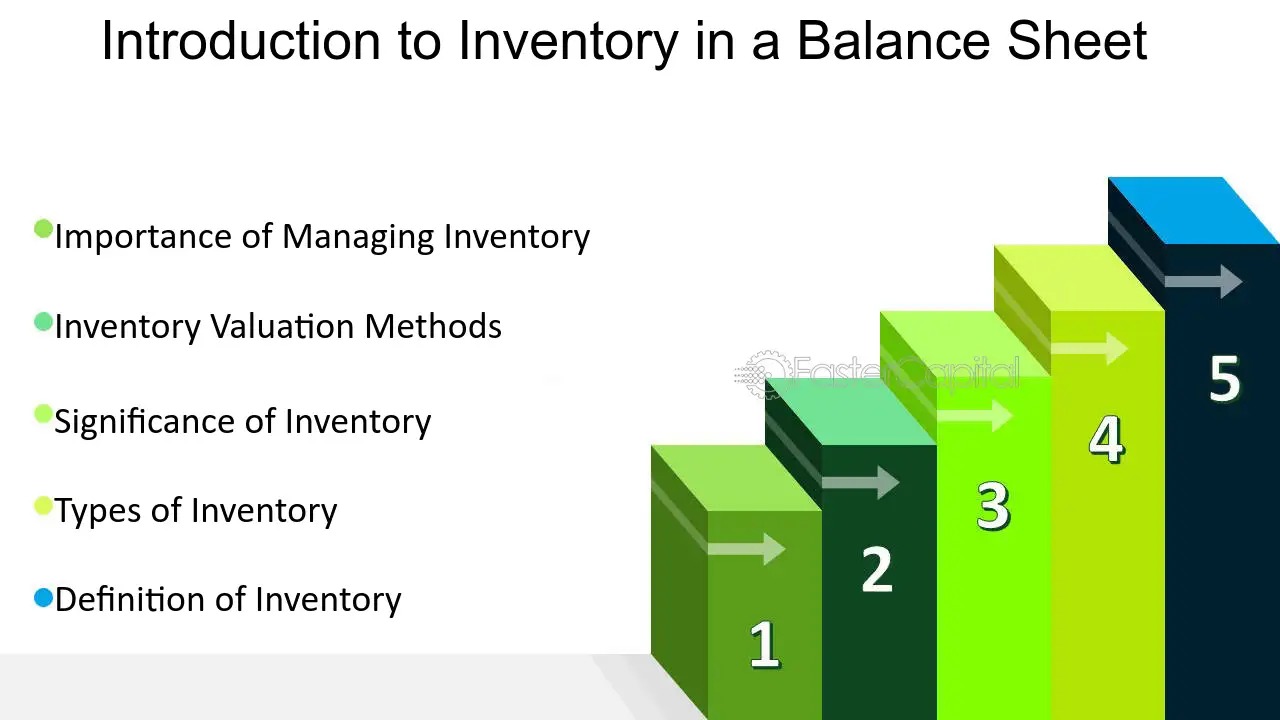

Finance
How To Access Home Equity
Published: January 15, 2024
Access the equity in your home to finance your dreams. Discover the steps to unlock your home's financial potential with our expert guide on how to access home equity.
(Many of the links in this article redirect to a specific reviewed product. Your purchase of these products through affiliate links helps to generate commission for LiveWell, at no extra cost. Learn more)
Table of Contents
- Introduction
- What is Home Equity?
- Understanding the Benefits of Accessing Home Equity
- Assessing Your Home Equity
- Options for Accessing Home Equity
- Home Equity Loan
- Home Equity Line of Credit (HELOC)
- Cash-Out Refinancing
- Reverse Mortgage
- Factors to Consider Before Accessing Home Equity
- How to Calculate Your Borrowing Capacity
- Risks and Precautions
- Conclusion
Introduction
Welcome to this comprehensive guide on how to access home equity. If you own a home, you may be sitting on a valuable asset that you can tap into for various purposes, such as home improvements, debt consolidation, or funding major expenses. Home equity refers to the difference between the current market value of your property and the outstanding balance of your mortgage. Accessing home equity can provide you with a significant financial resource, but it’s important to understand the options available and evaluate the associated risks. In this article, we will explore what home equity is, the benefits of accessing it, and the different methods you can use to tap into this resource.
For many homeowners, their property is one of their most substantial investments. As you make mortgage payments and the value of your home appreciates over time, you are building equity. So what exactly is home equity? It is the portion of your property’s value that you truly own – the amount that is not owed to the mortgage lender. By accessing your home equity, you essentially convert a portion of this ownership into liquid cash.
There are several compelling benefits to accessing home equity. Firstly, it can provide you with a source of funds that may be more affordable and easily accessible compared to other types of loans. Additionally, the interest rates on home equity loans or lines of credit are often more favorable than those of credit cards or personal loans. This can lead to significant savings in interest payments over time. Furthermore, using your home equity instead of taking on additional debt can help you consolidate and manage your finances more effectively.
However, it is crucial to assess your home equity and consider various factors before deciding whether to access it. This includes evaluating your financial goals, your ability to repay the borrowed funds, and the potential risks involved. Additionally, you should familiarize yourself with the different methods available to access home equity, such as home equity loans, home equity lines of credit (HELOC), cash-out refinancing, and reverse mortgages. Each option has its own advantages and considerations that you should be aware of.
In the following sections, we will delve into these topics in more detail, providing you with the knowledge and insights you need to make an informed decision about accessing your home equity. Whether you are looking to start a home renovation project, consolidate your debts, or pursue other financial goals, understanding how to tap into your home equity can be a valuable tool in achieving your objectives. Let’s explore the options together.
What is Home Equity?
Home equity is the difference between the current market value of your home and the outstanding balance of your mortgage. Simply put, it is the portion of your property’s value that you truly own. As you continue to make mortgage payments, your equity gradually increases, and if the value of your home appreciates, your equity can grow even further.
For example, let’s say your home is currently valued at $400,000, and you have a remaining mortgage balance of $250,000. In this scenario, your home equity would be $150,000 ($400,000 – $250,000).
Home equity serves as a valuable asset that you can tap into when you need additional funds. It is like a store of value that you have built up over time, allowing you to potentially access a significant amount of money for various purposes without needing to sell your home.
There are a few key factors that can influence the amount of your home equity. The first and most significant factor is the current market value of your home. This value can fluctuate over time based on factors such as the real estate market conditions and home improvements you may have made.
The second factor is your remaining mortgage balance. As you make regular mortgage payments, your outstanding balance decreases, and your equity increases accordingly. The length of time you’ve been making mortgage payments will also impact the amount of equity you have accumulated.
It’s important to note that there may be certain limitations on the amount of home equity you can access. Lenders typically impose a maximum loan-to-value (LTV) ratio, which is the percentage of your home’s value that they are willing to lend against. This ratio can vary depending on the lender and your financial situation, but it generally ranges from 80-90% of the home’s appraised value.
Understanding your home equity is crucial because it enables you to leverage this asset for various financial needs. Whether you want to finance home renovations, pay for education expenses, consolidate high-interest debts, or cover unforeseen expenses, accessing your home equity can provide you with a flexible and potentially cost-effective solution.
Keep in mind that accessing your home equity involves borrowing against the value of your property, which means you will incur additional debt. It’s important to carefully assess your financial situation, goals, and repayment capability before tapping into your equity. We will explore the different methods of accessing home equity and discuss the associated risks and considerations in the subsequent sections.
Understanding the Benefits of Accessing Home Equity
Accessing your home equity can offer several benefits that can help you achieve your financial goals. Let’s explore some of the advantages of tapping into this valuable resource.
1. Lower interest rates: Home equity loans or lines of credit generally come with lower interest rates compared to other forms of borrowing, such as credit cards or personal loans. This lower interest rate can save you significant amounts of money in interest payments over the life of the loan.
2. Access to large sums of money: If you need a substantial amount of money for a major expense, accessing your home equity can provide you with the funds you need. Depending on the equity you have built up and the lender’s policies, you may be able to borrow a sizable amount to finance home renovations, start a business, pay for education expenses, or cover medical bills.
3. Flexibility in use: Unlike some other types of loans, accessing your home equity provides you with the flexibility to use the funds in any way you choose. Whether you want to consolidate high-interest debts, invest in another property, or make improvements to your current home, the choice is yours.
4. Tax advantages: In some cases, the interest paid on a home equity loan or line of credit may be tax-deductible. However, it is advisable to consult with a tax professional to understand the specific tax implications based on your individual circumstances.
5. Consolidation of debts: If you have multiple high-interest debts, such as credit card balances or personal loans, accessing your home equity can allow you to consolidate these debts into a single loan with a lower interest rate. This can help simplify your financial situation and potentially save you money in interest payments.
6. Potential for appreciation: By investing your home equity into home improvements or other ventures, you may be able to increase the overall value of your property. This can lead to further appreciation in your home equity over time, providing you with additional financial benefits in the long run.
7. Preservation of savings: Accessing your home equity can be an alternative to using your savings or retirement funds to finance major expenses. By leveraging your home equity, you can preserve your savings and maintain a financial safety net for unexpected circumstances.
While accessing your home equity offers numerous advantages, it’s crucial to consider the potential risks and responsibilities. Borrowing against your home means taking on additional debt and using your property as collateral. Failure to repay the borrowed funds could result in foreclosure and the loss of your home. Therefore, it’s essential to assess your financial situation, consider your repayment capability, and approach home equity access with caution.
In the next sections, we will explore the different options available to access home equity, including home equity loans, home equity lines of credit (HELOC), cash-out refinancing, and reverse mortgages. By understanding these options, you can make an informed decision that aligns with your financial objectives and circumstances.
Assessing Your Home Equity
Before you can access your home equity, it’s important to get an accurate assessment of how much equity you have built up in your property. This evaluation will help you determine the potential amount of funds you can borrow against and guide you in making informed decisions. Here are some key steps to assess your home equity:
1. Determine the current market value of your home: The first step is to determine the current market value of your property. You can research recent sales of similar homes in your area, consult with a real estate appraiser, or use online tools and resources that provide estimated property values. Keep in mind that the actual appraised value may vary, especially if there have been significant changes in the local real estate market.
2. Calculate your loan-to-value (LTV) ratio: The loan-to-value ratio is the percentage of your home’s value that is currently mortgaged. To calculate this ratio, divide your outstanding mortgage balance by the appraised value of your home. For example, if your home is appraised at $400,000 and you have a remaining mortgage balance of $250,000, your LTV ratio would be 62.5% ($250,000 / $400,000).
3. Determine the maximum borrowing limit: Lenders usually have a maximum loan-to-value ratio that they are willing to offer. This ratio typically ranges from 80-90% of the appraised value of your home. Multiply the appraised value by the lender’s maximum LTV ratio to determine the maximum borrowing limit. For instance, if the lender’s maximum LTV ratio is 80% and your home is valued at $400,000, the maximum borrowing limit would be $320,000 (80% x $400,000).
4. Calculate your available home equity: To determine your available home equity, subtract your remaining mortgage balance from the maximum borrowing limit. Using the previous example, if your remaining mortgage balance is $250,000, your available home equity would be $70,000 ($320,000 – $250,000).
Assessing your home equity will give you a clear understanding of the financial resource that is available to you. However, keep in mind that lenders may have additional factors and criteria in assessing your eligibility for home equity loans or lines of credit. These may include your credit score, debt-to-income ratio, and employment history.
Additionally, keep in mind that the value of your home and your equity can change over time as the real estate market fluctuates. Regularly reassessing your home equity can help you stay informed about your financial position and the potential options available to you.
Understanding your home equity is crucial in making informed decisions about accessing this valuable resource. In the next sections, we will explore the different methods you can use to tap into your home equity, including home equity loans, home equity lines of credit (HELOC), cash-out refinancing, and reverse mortgages. Each option has its own considerations, benefits, and risks that you should carefully evaluate based on your financial goals and circumstances.
Options for Accessing Home Equity
Once you have assessed your home equity, you can explore various options for accessing these funds. Here are the four common methods to tap into your home equity:
1. Home Equity Loan: A home equity loan, also known as a second mortgage, allows you to borrow a lump sum of money based on the equity you have built in your home. The loan is typically repaid over a fixed term, with fixed monthly payments and a fixed interest rate. This option is ideal if you have a specific project or expense in mind, such as a home renovation or education costs, and require a one-time disbursement of funds.
2. Home Equity Line of Credit (HELOC): A home equity line of credit is a revolving line of credit that allows you to borrow funds as needed, up to a predetermined limit. Similar to a credit card, you can borrow and repay the funds multiple times during the draw period, which is usually 5-10 years. The interest rate is typically variable, and you only pay interest on the amount you have borrowed. This option is more flexible as it gives you the ability to access funds as you need them, making it suitable for ongoing expenses or projects with uncertain costs.
3. Cash-Out Refinancing: Cash-out refinancing involves replacing your existing mortgage with a new one for a higher amount than the current outstanding balance. You receive the difference between the new loan amount and your old mortgage balance in cash. This method allows you to access a larger sum of money than other options, but it also resets the term of your mortgage. Cash-out refinancing is beneficial if you want to consolidate debts, make a large one-time purchase, or invest in another property.
4. Reverse Mortgage: A reverse mortgage is specifically designed for homeowners aged 62 and older. It allows you to convert a portion of your home equity into tax-free cash without needing to sell your home or make monthly mortgage payments. The loan is repaid when you sell the home, move out, or pass away. Reverse mortgages are suited for retirees who want to supplement their income, cover healthcare expenses, or simply enjoy their retirement years with increased financial flexibility.
Each option has its own set of advantages, considerations, and risks. It’s essential to carefully evaluate your financial goals, repayment capability, and preferences to choose the option that aligns best with your needs. You may also want to consult with a financial advisor to help you make an informed decision.
Keep in mind that accessing your home equity involves borrowing against the value of your property, which means taking on additional debt. It’s important to borrow responsibly and consider the impact on your overall financial situation. Assess the terms and costs associated with each option, such as closing costs, interest rates, and repayment schedules, to determine the most suitable choice for you.
In the next sections, we will take a closer look at each of these options, providing you with more detailed information to help you make an informed decision about accessing your home equity.
Home Equity Loan
A home equity loan, also known as a second mortgage, is a type of loan that allows you to borrow a lump sum of money based on the equity in your home. It is a popular option for homeowners who need funds for specific purposes, such as home renovations, debt consolidation, or major expenses. This loan is secured by your property, using your home as collateral.
Here are some key features and considerations of a home equity loan:
Loan Amount: The amount you can borrow with a home equity loan is determined by the available equity in your home. The lending institution typically sets a maximum borrowing limit, which is a percentage of the appraised value of your home minus the outstanding mortgage balance. This limit can range from 80-90% of the appraised value.
Fixed Interest Rate: Home equity loans often come with a fixed interest rate, which means the rate remains the same for the entire term of the loan. This provides stability and predictable monthly payments, allowing you to budget accordingly.
Fixed Term: Home equity loans have a fixed repayment term, typically ranging from 5-30 years. The term determines the duration for which you will be making monthly payments to repay the loan. Shorter terms usually have higher monthly payments but result in lower total interest paid over the life of the loan.
Monthly Payments: With a home equity loan, you are required to make regular monthly payments of principal and interest throughout the loan term. These payments go towards repaying the borrowed amount and covering the accrued interest.
Potential Tax Benefits: In some cases, the interest paid on a home equity loan may be tax-deductible, making it an attractive borrowing option for homeowners. However, it’s important to consult with a tax advisor to understand the specific tax implications based on your individual circumstances.
When considering a home equity loan, it’s crucial to carefully evaluate your financial situation and repayment capability. Here are some factors to consider:
Reason for Borrowing: Determine why you need the funds and whether a home equity loan is the most suitable option for your specific purpose. If you have a one-time expense or a home improvement project with a clear cost, a home equity loan can provide you with the necessary funds.
Loan Costs: Consider the costs associated with a home equity loan, such as origination fees, closing costs, appraisal fees, and any additional charges from the lender. These costs can vary between lenders, so it’s important to compare them and factor them into your decision-making process.
Repayment Capacity: Assess your ability to make the monthly loan payments consistently. Consider your existing financial obligations and budget to ensure that you can comfortably meet the repayment requirements. Defaulting on a home equity loan could put your property at risk of foreclosure.
Interest Rates: Compare interest rates from different lenders to ensure you secure a favorable rate. A lower interest rate can save you money over the life of the loan.
Accessing the equity in your home through a home equity loan can be a practical solution to finance your goals. By using your home as collateral, you can potentially access a significant amount of funds at a manageable interest rate. However, it’s essential to carefully consider the associated risks and ensure that you have a solid plan in place for repayment.
In the following sections, we will explore other options for accessing home equity, including home equity lines of credit (HELOC), cash-out refinancing, and reverse mortgages. Understanding the pros and cons of each option will enable you to make an informed decision that aligns with your financial needs and goals.
Home Equity Line of Credit (HELOC)
A Home Equity Line of Credit (HELOC) is a flexible borrowing option that allows you to access funds based on the available equity in your home. It is a revolving line of credit, similar to a credit card, which means you can borrow and repay the funds multiple times during the draw period. HELOCs are popular for homeowners who need funds for ongoing expenses or projects with uncertain costs.
Here are some key features and considerations of a home equity line of credit:
Draw Period and Repayment Period: A HELOC typically consists of two phases: the draw period and the repayment period. The draw period is the period during which you can borrow from the line of credit, usually lasting 5-10 years. During this time, you are only required to make interest payments on the amount you have borrowed. After the draw period ends, the repayment period begins, typically lasting 10-20 years, during which you are required to make payments towards both the principal and interest.
Variable Interest Rate: HELOCs generally have a variable interest rate, which means the rate can fluctuate over time based on market conditions. The interest rate is often tied to a benchmark rate, such as the prime rate, and may have a margin added to it. It’s important to understand the terms of your HELOC, including any periodic rate adjustment caps or lifetime rate caps, to anticipate potential changes in your interest payments.
Flexible Borrowing and Repayment: With a HELOC, you have the flexibility to borrow funds as needed during the draw period. You can choose to borrow a small or large amount up to the approved credit limit. As you repay the borrowed funds, your available credit replenishes, providing you with ongoing access to funds. The minimum monthly payment during the draw period usually only covers the interest charges, but you can choose to make additional principal repayments if desired.
Repayment Terms: The repayment period begins after the draw period ends. During this time, you are required to make monthly payments that cover both principal and interest. The repayment period is usually longer than the draw period, giving you ample time to repay the outstanding balance. Keep in mind that interest rates during the repayment period may be higher than during the draw period, and your monthly payments will likely increase due to the addition of principal repayment.
Access to Funds: HELOC funds can be accessed through checks, online transfers, or a linked credit card provided by the lender. This gives you the convenience of instant access to funds whenever and wherever you need them.
When considering a HELOC, it’s important to carefully evaluate your financial situation and borrowing needs. Here are some factors to consider:
Usage and Repayment Plan: Determine how you plan to use the funds and whether a HELOC is suitable for your borrowing needs. If you require ongoing access to funds or for projects with changing costs, a HELOC can provide the flexibility you need.
Interest Rate Considerations: Understand the terms of your HELOC, including the interest rate, rate adjustment frequency, and any rate caps. Consider how potential interest rate changes may impact your monthly payments and overall affordability.
Credit Limit and Spending Discipline: Take into account the credit limit offered by the lender and make sure it aligns with your borrowing requirements. It’s important to have a spending plan in place to avoid excessive debt and ensure you can comfortably manage the monthly payments.
Repayment Capacity: Assess your ability to make the monthly payments during both the draw and repayment periods. Consider your budget and financial obligations to ensure that you can meet the repayment requirements, particularly when the repayment period begins and monthly payments increase.
A home equity line of credit can provide you with significant financial flexibility and the ability to borrow funds as needed. However, it’s important to exercise responsible borrowing and have a plan for repayment. Understanding the pros and cons of a HELOC will help you make an informed decision that aligns with your financial objectives.
In the following sections, we will explore other options for accessing home equity, including home equity loans, cash-out refinancing, and reverse mortgages. Understanding the different methods will enable you to choose the option that best suits your needs and goals.
Cash-Out Refinancing
Cash-out refinancing is a method of accessing your home equity by refinancing your existing mortgage for a higher amount than your current outstanding balance. It allows you to convert a portion of your home equity into liquid cash that can be used for various purposes, such as consolidating debts, funding home improvements, or investing in other ventures.
Here’s how cash-out refinancing works:
1. Assessment of Current Mortgage: Start by evaluating your current mortgage terms, including the interest rate, remaining balance, and repayment period. Understanding these details will help you determine whether refinancing is a viable option for accessing your home equity.
2. Property Appraisal: A professional appraiser will assess the current market value of your property. This valuation is crucial because the amount you can borrow through cash-out refinancing is typically limited to a percentage of the appraised value.
3. Loan Application and Approval: Once you have a clear understanding of your property’s value, you can apply for a cash-out refinance loan with a lender. The lender will evaluate your eligibility based on factors such as credit score, debt-to-income ratio, and employment history. If approved, the lender will provide you with the new mortgage terms, which will include the increased loan amount reflecting the cash-out portion.
4. Paying Off Existing Mortgage and Receiving Cash: During the refinancing process, the new mortgage funds will be used to pay off your existing mortgage in full. The remaining funds, representing the cash-out portion, will be provided to you in the form of a lump sum payment at closing.
Cash-out refinancing offers several benefits:
1. Access to a Larger Amount of Funds: Cash-out refinancing allows you to access a larger sum of money compared to other methods of accessing home equity, such as home equity loans or lines of credit.
2. Lower Interest Rates: Depending on current market rates and your creditworthiness, refinancing your mortgage could result in a lower interest rate than your original loan. This can lead to long-term savings on interest payments.
3. Consolidation of Debts: Cash-out refinancing can be used to consolidate high-interest debts, such as credit card balances or personal loans, into a single, more manageable mortgage payment. This can help simplify your finances and potentially save you money on interest charges.
However, there are important considerations to take into account:
1. Costs and Fees: Cash-out refinancing involves closing costs, which typically include appraisal fees, origination fees, title search fees, and other administrative expenses. It’s important to factor these costs into your financial calculations and determine if the potential savings outweigh the fees.
2. Resetting the Loan Term: When you refinance your mortgage, you are essentially taking out a new loan. This means that your loan term will typically restart, potentially extending the time it takes to pay off your mortgage in full. It’s crucial to consider the impact of this extended term on your financial plans and goals.
3. Increased Mortgage Balance: As with any form of borrowing against your home, cash-out refinancing increases your overall mortgage balance. This means that your monthly mortgage payments will likely increase as well, potentially impacting your monthly budget.
Cash-out refinancing can be a valuable option for homeowners seeking to access their home equity for specific financial needs. However, it’s important to carefully evaluate the costs, consequences, and long-term financial implications before proceeding with this method. Consulting with a mortgage professional or financial advisor can help you assess whether cash-out refinancing is the right choice for you.
In the following sections, we will explore other options for accessing home equity, including home equity loans, home equity lines of credit (HELOC), and reverse mortgages. Understanding the various methods will help you make an informed decision that aligns with your unique circumstances and objectives.
Reverse Mortgage
A reverse mortgage is a financial product specifically designed for homeowners aged 62 and older. It allows homeowners to convert a portion of their home equity into tax-free cash without needing to sell their home or make monthly mortgage payments. Instead, the loan is repaid when the homeowner sells the property, moves out, or passes away.
Here are some key features and considerations of a reverse mortgage:
Eligibility: To qualify for a reverse mortgage, you must be at least 62 years old and own a home that is your primary residence. The amount of loan you can receive is based on factors such as your age, the appraised value of your home, and the interest rate.
No Monthly Payments: Unlike traditional mortgages, reverse mortgages do not require monthly payments. The loan balance, including accrued interest and fees, is repaid when the loan becomes due, which typically occurs when the homeowner sells the property, moves out, or passes away.
Flexibility in Use of Funds: Homeowners can use the funds obtained from a reverse mortgage for various purposes, including covering living expenses, healthcare costs, home renovations, or simply enjoying retirement with increased financial flexibility. There are typically no restrictions on how the funds are used.
Interest Accrual: Although no monthly payments are required, interest continues to accrue on the outstanding loan balance over time. The interest is added to the loan balance, resulting in an increasing debt over the life of the loan.
Loan Repayment: When the loan becomes due, either due to the homeowner’s passing or the home being sold, the loan is repaid from the sale proceeds. If the sales proceeds exceed the loan balance, the remaining funds go to the homeowner or their heirs. If the loan balance exceeds the sales proceeds, the lender typically absorbs the difference through mortgage insurance or other arrangements.
Reverse mortgages can offer several benefits to eligible homeowners:
1. Supplement Retirement Income: Reverse mortgages can provide additional funds to supplement retirement income, allowing homeowners to improve their financial security and maintain their desired lifestyle.
2. Remain in Your Home: With a reverse mortgage, you can continue to live in your home and maintain ownership while accessing the equity you have built up over the years.
3. Flexibility and Control: Reverse mortgage funds can be used at your discretion, providing you with the flexibility to cover various expenses or invest in other ventures.
However, it’s important to consider potential drawbacks and factors prior to obtaining a reverse mortgage:
1. Accrued Interest and Growing Debt: The interest on a reverse mortgage accumulates over time, resulting in an increasing loan balance. This can reduce the equity available for other purposes, such as leaving an inheritance to heirs.
2. Effect on Heirs: Reverse mortgages can potentially reduce or eliminate the home equity that would have been inherited by your heirs. They need to be aware that they may need to repay the loan balance or sell the property to satisfy the debt.
3. Costs and Fees: Reverse mortgages have various costs and fees, such as origination fees, insurance premiums, and closing costs. These expenses should be carefully evaluated and compared when considering a reverse mortgage.
It’s essential to conduct thorough research, seek advice from a qualified financial advisor, and carefully consider your financial goals and obligations before deciding to obtain a reverse mortgage. Understanding the implications and potential risks associated with this financial product is crucial to making an informed decision that aligns with your unique circumstances.
In the following sections, we will explore other options for accessing home equity, including home equity loans, home equity lines of credit (HELOC), and cash-out refinancing. By understanding the available methods, you can choose the option that best meets your financial needs and objectives.
Factors to Consider Before Accessing Home Equity
Before accessing your home equity, it’s crucial to carefully evaluate various factors to ensure you make an informed decision that aligns with your financial goals and circumstances. Here are some key factors to consider:
1. Financial Goals: Clearly define your financial goals and objectives for accessing your home equity. Whether you’re looking to fund a home renovation, pay off high-interest debts, invest in another property, or cover major expenses, understanding your goals will help you determine the most appropriate method for accessing your equity.
2. Repayment Capability: Assess your ability to repay the borrowed funds. Consider factors such as your monthly income, existing debts, and financial obligations. You should have a solid plan in place to ensure you can comfortably manage the monthly payments associated with accessing your home equity.
3. Current Interest Rates: Take into account the prevailing interest rates when considering various options for accessing your home equity. Different methods, such as home equity loans, home equity lines of credit (HELOC), cash-out refinancing, and reverse mortgages, may have different interest rates. Compare these rates and consider the potential impact on your monthly payments and overall loan costs.
4. Cost Considerations: Evaluate the costs associated with accessing your home equity. Different methods may involve fees such as origination fees, closing costs, appraisal fees, and insurance premiums. Understanding these costs and comparing them across different options will help you make an informed decision.
5. Impact on Equity and Home Ownership: Consider the long-term impact on your home equity and ownership. Some methods, such as home equity loans or cash-out refinancing, may increase your mortgage balance, reducing the equity in your home. This can affect your ability to build wealth and leave a financial legacy for your heirs.
6. Potential Tax Implications: Be aware of any potential tax implications associated with accessing your home equity. In some cases, the interest paid on a home equity loan or line of credit may be tax-deductible. Consult with a tax professional to understand the specific tax implications based on your individual circumstances.
7. Risks and Precautions: Consider the risks associated with borrowing against your home equity. It’s important to understand the potential consequences, such as foreclosure, if you are unable to repay the borrowed funds. Assess your overall financial situation and risk tolerance to ensure you are comfortable with the potential outcomes.
By carefully evaluating these factors, you can make a well-informed decision about accessing your home equity. Consider consulting with a financial advisor or mortgage professional to help guide you through the process and provide personalized advice based on your specific situation.
Accessing your home equity can be a strategic financial move, providing you with resources to achieve your goals. However, it’s essential to proceed with caution, weigh the benefits against the risks, and consider the long-term impact on your overall financial well-being.
In the following sections, we will explore different options for accessing home equity, including home equity loans, home equity lines of credit (HELOC), cash-out refinancing, and reverse mortgages. Understanding the details and considerations of each method will assist you in making the best decision for your financial needs and objectives.
How to Calculate Your Borrowing Capacity
Calculating your borrowing capacity is an essential step in determining how much you can borrow against your home equity. It involves evaluating your financial situation, including factors such as your income, debts, and creditworthiness. By understanding your borrowing capacity, you can make informed decisions when accessing your home equity. Here are the key steps to calculate your borrowing capacity:
1. Assess Your Income: Start by determining your total income, including primary employment, secondary sources, and any additional income streams. Include all regular income sources to get an accurate picture of your overall financial capacity.
2. Consider Your Debt-to-Income Ratio: Calculate your debt-to-income (DTI) ratio, which is the percentage of your gross monthly income that goes towards debt payments. Lenders typically have specific DTI requirements, so it’s important to ensure your debts are manageable and fall within acceptable limits. Calculate your DTI by dividing your total monthly debt payments by your gross monthly income, and then multiply the result by 100 to get the percentage.
3. Evaluate Your Credit Score: Obtain a copy of your credit report and assess your credit score. Lenders use credit scores to evaluate your creditworthiness and determine the interest rates and terms they can offer you. A higher credit score typically results in better loan terms and access to a larger borrowing capacity.
4. Consider the Loan-to-Value (LTV) Ratio: The loan-to-value ratio is the percentage of your home’s value that a lender is willing to lend against. The LTV ratio is dependent on various factors, including the lender’s policies, your creditworthiness, and the purpose for which you are borrowing. Generally, lenders have LTV ratios ranging from 80-90% of the appraised value of your home.
5. Determine Your Available Equity: Calculate your available home equity by subtracting your outstanding mortgage balance from your home’s current market value. The available home equity represents the amount you may be able to borrow against.
6. Consider Other Factors: Take into account any additional factors that may influence your borrowing capacity, such as employment stability, financial reserves, and any unique lender requirements.
It’s important to note that while these steps provide a general framework for calculating borrowing capacity, lenders may have additional criteria or considerations that can affect the final determination of your eligibility and borrowing amount.
By assessing your income, evaluating your debt-to-income ratio, considering your credit score, and understanding the loan-to-value ratio, you can estimate your borrowing capacity. Keep in mind that calculating your borrowing capacity is not a guarantee of loan approval, as lenders have their own underwriting processes and criteria.
When accessing your home equity, it’s crucial to borrow responsibly and ensure that you can comfortably manage the monthly loan payments. Be realistic about your financial situation and goals to make informed decisions regarding your borrowing capacity.
In the subsequent sections, we will explore different options for accessing home equity, including home equity loans, home equity lines of credit (HELOC), cash-out refinancing, and reverse mortgages. Understanding these options will help you determine which method aligns best with your borrowing capacity and financial objectives.
Risks and Precautions
Accessing your home equity can be a valuable financial tool, but it’s crucial to be aware of the risks involved and take necessary precautions. Here are some key risks to consider and precautions to take when accessing your home equity:
1. Increased Debt: When you borrow against your home equity, you are taking on additional debt. It’s important to consider your overall debt load and whether you have sufficient income to comfortably manage the new debt payments. Taking on too much debt can strain your finances and put your home at risk if you’re unable to make the payments.
Precaution: Evaluate your financial capacity and ensure that you can afford the new debt payments without jeopardizing your financial stability. Create a comprehensive budget to understand your income, expenses, and debt obligations. This will give you a clear picture of how much you can comfortably borrow and repay.
2. Fluctuating Interest Rates: Interest rates on home equity loans, HELOCs, and mortgages can be variable, meaning they can change over time based on market conditions. If interest rates rise, your monthly payments could increase, making it more challenging to manage your debt. This can be a particular concern if you have a HELOC with interest-only payments during the draw period.
Precaution: Consider the potential impact of fluctuating interest rates on your ability to repay the loan. If you’re concerned about rising interest rates, you may want to opt for a fixed-rate home equity loan. If you have a variable interest rate, ensure that you have a buffer in your budget to handle potential increases in monthly payments.
3. Negative Equity: Negative equity, also known as being “underwater,” occurs when the outstanding loan balance exceeds the value of your home. If property values decline, you may owe more than your home is worth. This can limit your options if you need to sell or refinance your home. Negative equity can be a concern in situations where property values are volatile or experiencing downturns.
Precaution: Be cautious when borrowing against your home equity, especially when property values are uncertain. Consider conservative borrowing amounts to mitigate the risk of negative equity. Regularly monitor the real estate market to stay informed about any potential changes in property values in your area.
4. Potential Foreclosure: If you’re unable to make the required payments on your home equity loan or HELOC, you could be at risk of foreclosure. Defaulting on your loan payments can result in the lender seeking to recover the debt by forcing the sale of your home.
Precaution: Ensure that you have a stable income and a solid repayment plan in place before borrowing against your home equity. Create an emergency fund to cover unexpected expenses and contingencies to avoid defaulting on your loan. If you face financial difficulties, communicate with your lender early on to explore potential solutions and alternatives to foreclosure.
5. Impact on Inheritance: Accessing your home equity can reduce the amount of equity you leave as an inheritance to your heirs. This can be a consideration if passing wealth to your loved ones is a priority.
Precaution: Discuss your plans with your family members and heirs to ensure everyone is aware of your intention to borrow against your home equity. Consider alternative estate planning strategies or involve a financial advisor to find ways to mitigate the potential impact on inheritance.
It’s essential to carefully weigh the risks and take precautions to protect your financial well-being when accessing your home equity. Consult with a financial advisor or mortgage professional to thoroughly understand the risks associated with your chosen method and to determine the best course of action based on your individual circumstances.
In the subsequent sections, we will explore different options for accessing home equity, including home equity loans, home equity lines of credit (HELOC), cash-out refinancing, and reverse mortgages. Understanding the risks and precautions associated with each method will assist you in making an informed decision that aligns with your financial goals and safeguards your financial stability.
Conclusion
Accessing your home equity can provide you with a valuable financial resource to achieve your goals and meet your financial needs. Whether you’re looking to fund home renovations, consolidate debts, invest in new ventures, or ensure a comfortable retirement, understanding the options available and the associated risks is crucial.
Throughout this guide, we have explored various methods to access home equity, including home equity loans, home equity lines of credit (HELOC), cash-out refinancing, and reverse mortgages. Each option has its own advantages, considerations, and risks to evaluate based on your unique circumstances.
Before accessing your home equity, take the time to assess the value of your home, evaluate your financial goals, consider your repayment capacity, and understand the potential risks. Carefully weigh the benefits against the risks and ensure that you can manage the additional debt responsibly. Consulting with a financial advisor or mortgage professional can provide valuable insights and guidance throughout this process.
Remember, accessing your home equity is a financial decision that requires careful planning and consideration. It’s important to choose the method that aligns with your long-term financial goals and safeguards your financial stability.
By understanding the factors involved and taking necessary precautions, you can make confident and informed decisions about accessing your home equity. Whether you choose to pursue a home equity loan, a HELOC, cash-out refinancing, or a reverse mortgage, you now have the knowledge to navigate the process and select the option that best suits your needs.
Accessing your home equity can be a powerful tool to improve your financial situation, fund important projects, or enhance your retirement lifestyle. With careful planning, responsible borrowing, and an understanding of the associated risks, you can make the most of your home equity and achieve your financial objectives.














